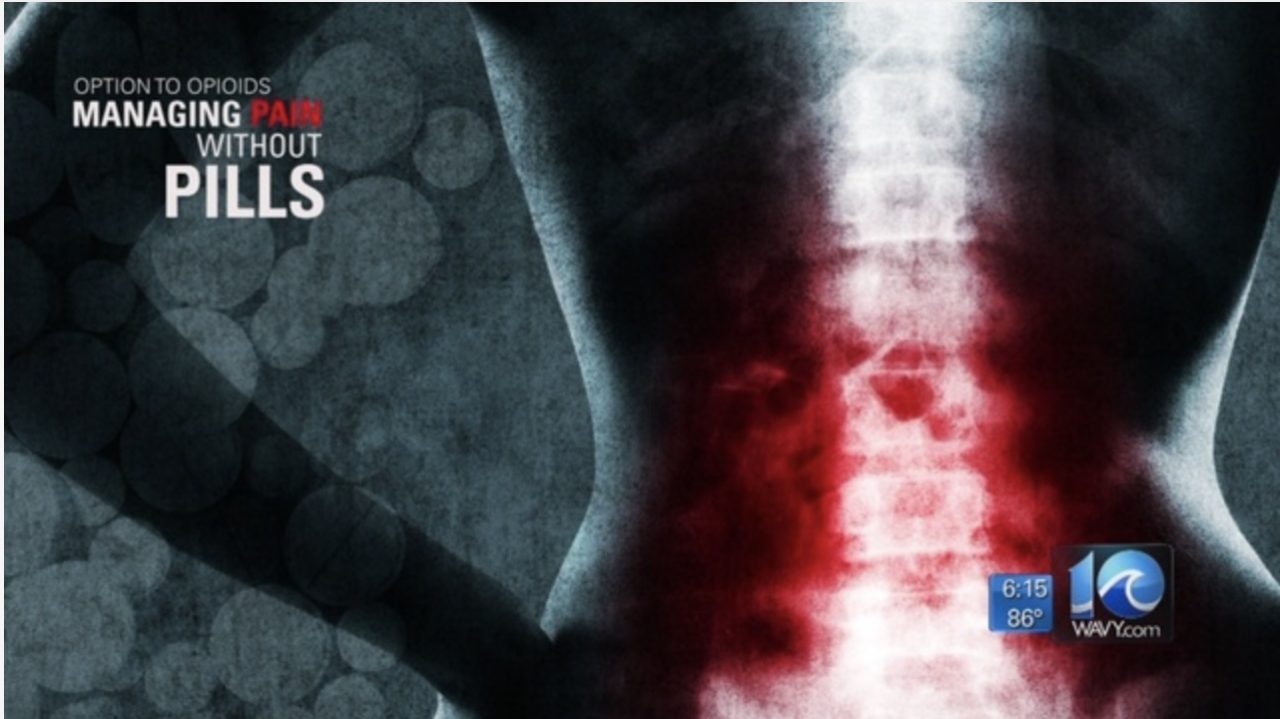SMOC In The News: Wavy Investigative Report: Option to Opioids

CHESAPEAKE, Va. (WAVY) – The latest technology in spinal cord stimulation offers another option for people who need to manage chronic pain.
Heather Breckenridge remembers the day her pain began. She works in a wine store on the Outer Banks.
“I was literally trying to put a price tag on a bottle and bent down to get it, and never got there. It was excruciating. Probably the worst contraction I ever had, and I had two kids.”
At first she thought she had only pulled a muscle, but in fact she had blown out two disks in her back. Even after four surgeries, the pain was persistent.
Then Breckenridge went from pain to pioneer, becoming one of the first people in Hampton Roads to benefit from a new type of implanted spinal cord stimulator.
Dr. Victor Tseng, a physician with the Sports Medicine & Orthopaedic Center in Chesapeake, was one of her surgeons.
“It went fantastic, she was our first trial patient with this new technology.”
A surgeon implants a device with leads that connect to parts of the spine, depending on the type of pain. A remote control lets you adjust the intensity. For Breckenridge, who lives in Kitty Hawk, the relief was nearly immediate.
“I knew it by the time we got back (home) from Chesapeake, in about an hour and a half.”
Now at the store where she works, Breckenridge can bend over, put bottles on shelves, and even carry a limited amount of weight without mind-numbing pain.
“Standing in line at the grocery store would hurt if I had to stand there too long. Now, nothing, I will stand there all day.”
Breckenridge says she no longer takes any regular prescriptions for pain. Tseng says he has already seen that kind of success with other patients.
“We’ve been able to reduce a significant amount of patients’ daily opiate usage, so I think it is an extremely viable option and good alternative to chronic opiates.”
The new technology, approved by the FDA in the past six months, comes at a time when deaths from prescription opioid overdose continue to rise. While the Virginia Hospital and Health Care Association says the number of opioid prescriptions is trending downward, the Virginia Department of Health says deaths from those prescriptions are increasing — with a total of 504 Virginians dying in 2017.
Summary of Statewide Opioid Prescription Overdose Deaths
- In 2015, 398 deaths
- In 2016, 472 deaths
- In 2017, 504 deaths
Source: Va. Dept of Health
Tseng says his mission is to find alternative ways to manage his patients’ pain. “Is taking a Percocet every six hours for the rest of your life, is that what you want to do? Is that safe?”
Before the implant, Breckenridge said she was on as many as five daily regular prescriptions for her pain.
“You just simply do not need them, the pain is just gone,” she says about the difference since having the procedure. “They said as long as I had a 50-75% reduction in my pain it would be a success. On any given day it’s 95-100%. There’s nothing there.”
Va. Healthcare Association: Data Shows Virginia Opioid Prescription Volume Trending Downward
Before the permanent device is implanted, both doctor and patient will know whether it’s a good fit, because the first step is a temporary stimulator, worn outside the body, to see if the patient’s a candidate.
“It is one of the only procedures out there where you can try it before you buy it for spine and chronic pain,” Tseng said. He says another advantage is none of the side effects associated with opioids.
“No fogginess, no constipation, and no potential for overdose. There’s no potential of overdose with this system.”
Breckenridge says she would recommend it to others with chronic pain. “To anyone, it is a lifesaver.”
Both the trial and the permanent procedures are out-patient, and take less than an hour each. The recovery from incision pain and bruising typically lasts a week or two, depending on the patient.










